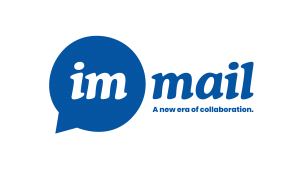
Productivity techniques for your work!
Achieving high and efficient productivity is what every company that plans, invests and aims to get the best results from its processes. However, in order to achieve the highest levels and stand out in the competitive market it is necessary to put in practice some methods and productivity techniques to produce better.
Using some of these productivity techniques, such as Pomodoro, Flow Time, Eisenhower Matrix and GTD methodology are great ways to boost your business. Considering this, in this article we will teach you how to use the best tools to make your workflow even more active and up to date with your demands. Keep reading and find out more!
1. Eisenhower Matrix
The Eisenhower Matrix, also known as Urgent-Important Matrix, is a time management technique, it is a solution for intense workflow. Dwight Eisenhower, then president of the United States, created this method to prioritize and organize the organizational tasks and process, on a daily basis.
This tool sorts tasks based on their importance and urgency, and they are distributed into 4 quadrants:
- Important and urgent;
- Important and not urgent;
- Not important and urgent;
- Not important and not urgent;
To ensure that the quadrants are organized and achieve their productivity objectives, it is important to understand what is urgent and what is important.
For important activities, the results act directly on the goals and objectives that you want to achieve. For urgent tasks, there is a deadline for them to be met. Therefore, you need to be careful to not compromise the result.
Next, check what you should enter in each quadrant. You must have extra attention when performing this step, so you do not enter incorrect information or insert too many activities in one single quadrant.
1st – IMPORTANT AND URGENT
Tasks that are extremely important for your work. They must have the highest level of priority, as they have a deadline to meet.
2nd – IMPORTANT AND NOT URGENT
In this quadrant you should place tasks that are related to your goals, but that do not have a strictly defined deadline.
Once you complete the tasks from the first quadrant, you can reallocate your time to put these tasks into practice and start working on them.
3rd – NOT IMPORTANT AND URGENT
Tasks in this quadrant have little importance, however they are urgent. These tasks do not need immediate attention, they can be rescheduled or delegated to someone else in the team.
4th – NOT IMPORTANT AND NOT URGENT
The tasks in this last quadrant depend on your perspective. If you placed them here, it means you might want to do them. However, as they are not important and not urgent, you can even discard them, and do not do them at all.
2. GTD Methodology
Getting Things Done is one of the most popular productivity techniques. GTD is the acronym of the methodology presented in the book “The Art of stress-free Productivity” written by David Allen, a consultant for productivity at work.
The GTD method helps to remove from your mind all the distractions and concerns that take away our focus when we are performing some task, they are known as “open loops”.
Before putting the method into practice, it is important to list all the tasks that need to be done. It is advised to write down each step on separate pieces of paper, so that you do not worry about the next step.
Allocate time for your personal tasks, for example, 20 minutes. During that time, you can reply to messages on your mobile phone, but do not be scattered! Check your emails, go to the bathroom, drink water, etc.
It is advisable to plan your GTD on the previous night, so you will know in advance which tasks you need to get done on the next day. It allows you to plan what time you will wake up on the next morning, for example, depending on the flow of activities for the next day.
3. Pomodoro
This technique was created from the idea of using the tomato shaped-kitchen timer, tomato = pomodoro (italian). The objective was to measure the study time of the young Francesco Cirillo. Only after the completion of the studies the rest would be allowed.
Cirillo is the creator of the Pomodoro technique, which is based on intervals that are timed, just like the timer used by Francesco. These intervals are divided into work and rest, they are called “pomodoros”. One must work continuously for 25 minutes and rest for 5 minutes. This cycle must be repeated for 4 times, then you take 15-20 minutes rest.
From this methodology, results come from continuous practice. The goal is to learn to stay focused on the task at hand, thus, it is a way to be productive while performing your daily tasks, by maximizing concentration and decreasing distractions.
Therefore, it can be used for any type of activity, such as work, studies, book reading and other time-consuming activities. You can plan and take notes just so everything is done within the deadlines.
4. FlowTime
The FlowTime productivity techniques is similar to the Pomodoro technique, its goal is to acquire concentration and avoid procrastination in work and study activities. However, it has interruptions flexibility.
In this way, performing the activities is less stressful, because the intervals are determined by the person, respecting his/her body and mind. For example, if the person has a back problem, this technique is a good option, allowing you to organize your time so you do not spend much time sitting down and you can do several breaks during the day.
The most important factor is to determine a time interval that you can stick to. The flexibility is in the duration of each task and rest intervals. So, set the time to start the break and to resume the activity. A suggestion is to start with 30 minutes of work and 10 minutes rest, moving to 40 minutes work and 15 minutes rest, if you want to.
During the break intervals, try to stretch and walk around the house. Drink some water, go to the bathroom, take a deep breath and get ready for the next step.
As we have seen, discipline is the only way to achieve goals and meet objectives. So, put one of these productivity techniques into practice and make sure that your business gains strength to establish itself in the market.
To go further in your learning, read our article on tips to improve productivity at work!


